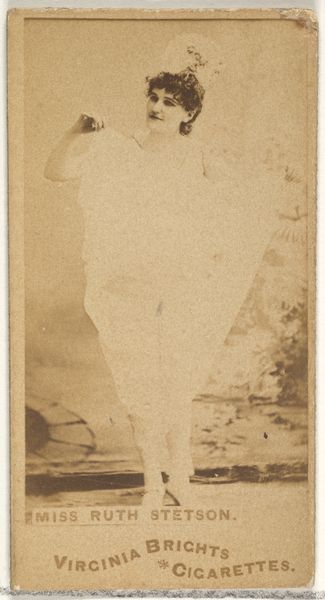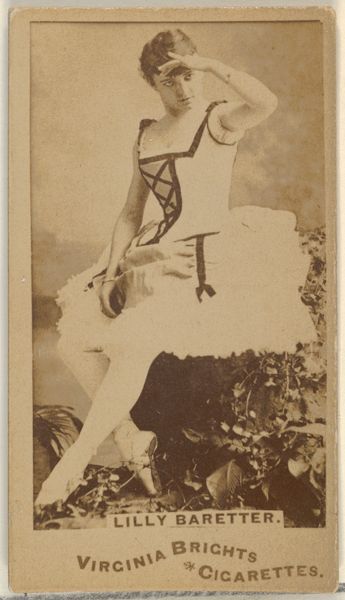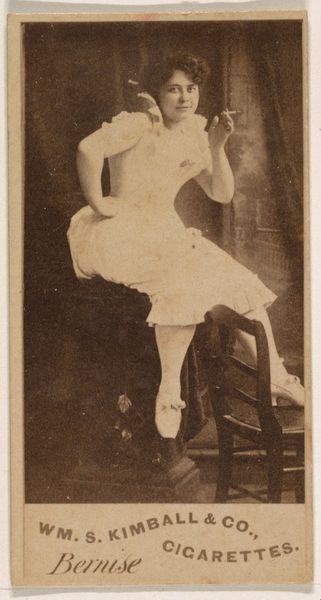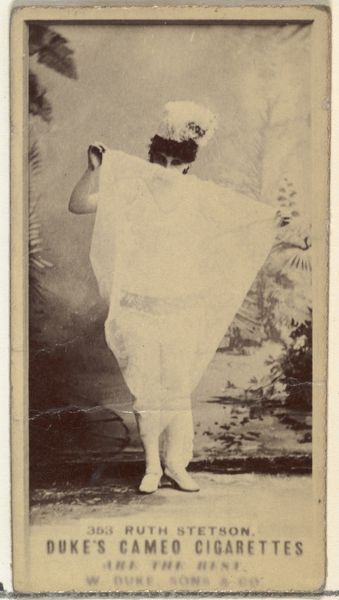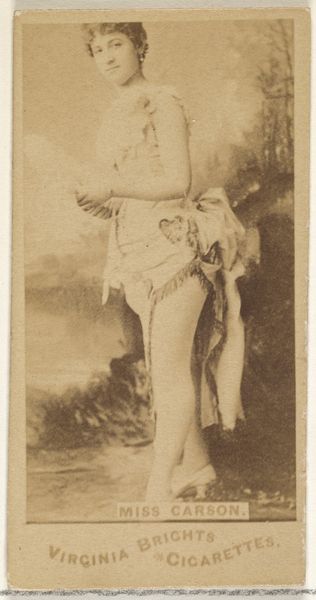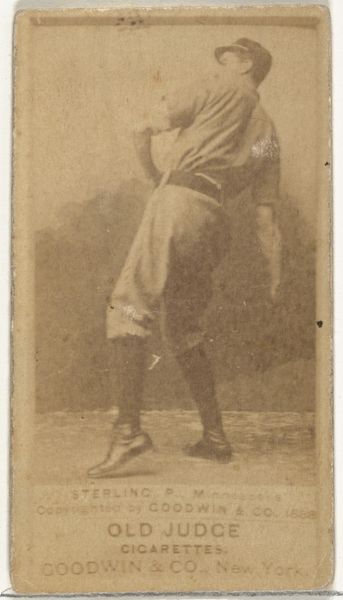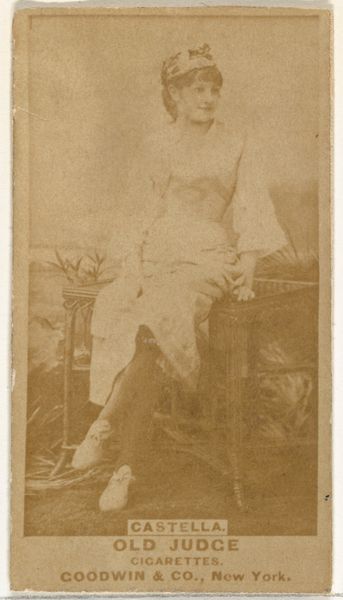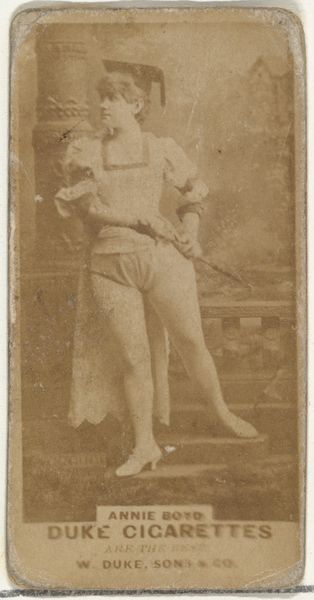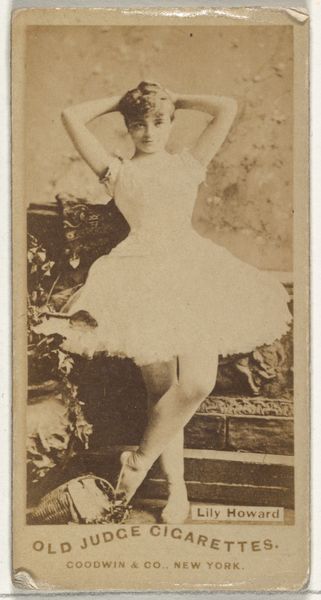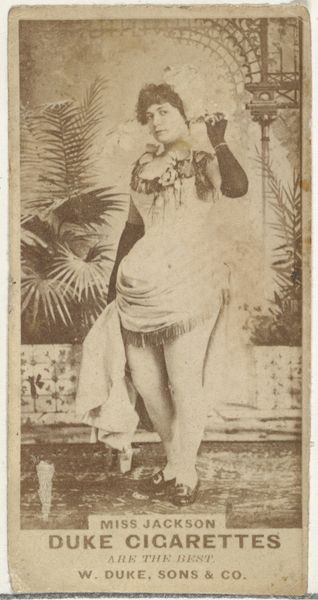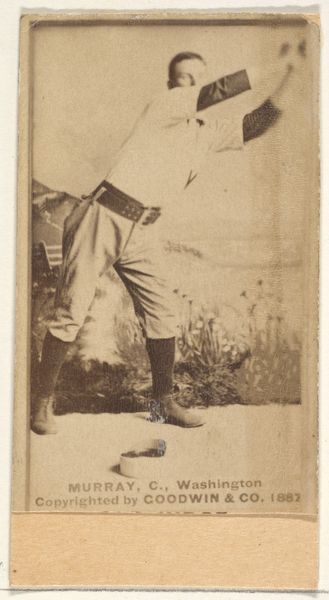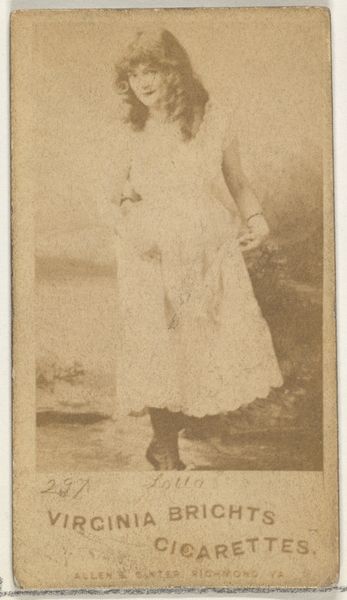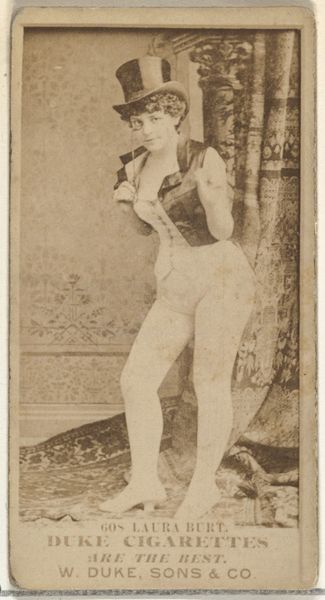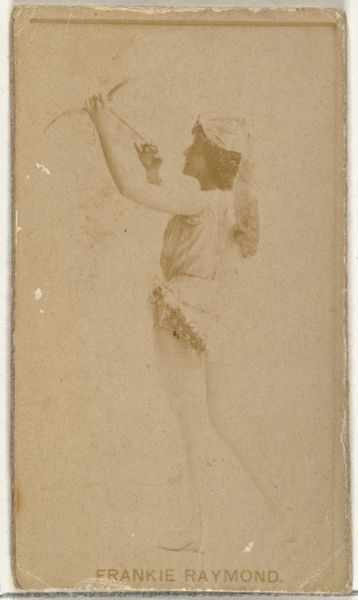
Ruth Stetson, from the Actors and Actresses series (N145-7) issued by Duke Sons & Co. to promote Duke Cigarettes 1880s
0:00
0:00
drawing, print, photography, collotype
#
portrait
#
drawing
# print
#
photography
#
collotype
#
academic-art
Dimensions: Sheet: 2 11/16 × 1 3/8 in. (6.8 × 3.5 cm)
Copyright: Public Domain
Curator: This is an advertising card dating to the 1880s. It’s from the Actors and Actresses series (N145-7) issued by Duke Sons & Co. to promote Duke Cigarettes. The subject is Ruth Stetson. Editor: It’s a bit ghostly, isn’t it? Washed out, almost sepia-toned. I notice the texture feels…starchy? Like a treated fabric, or perhaps the residue of cheap paper production. Curator: Well, it’s a collotype, a type of photomechanical print. Photography, drawing, and printmaking all meet here. That it's bound to advertisement shapes the artwork in a lot of ways, wouldn't you agree? Editor: Absolutely! Think about the means of production. Cheap materials, mass distribution…the whole point was getting these cards into as many hands as possible along with packs of cigarettes. Ruth Stetson becomes a commodity, a token of aspiration. Curator: It certainly illustrates how the burgeoning celebrity culture of the late 19th century was intimately connected to consumerism. Stetson's image is being used to sell a product. That's a fairly new cultural phenomenon at the time. Editor: Exactly, the social context here is paramount. You’re consuming both the cigarette and a fantasy of fame and sophistication attached to this performer. Consider also the female labor involved, mostly unacknowledged, in packaging and distribution! Curator: Yes, we see that interplay between gender, performance, and commercial imagery that really defines much of this era’s visual culture. Stetson’s portrait, framed by her profession and these collotype methods, makes you see her role in culture a little different than you would in oil. Editor: I am now thinking about that gap: oil paintings made during this period are now in institutions like this museum—yet this humble cigarette card has been produced through photographic means. So who decides which objects are classified as “art” and which ones as just a piece of mass production and advertising? Curator: Precisely! It questions that high-art boundary we place on our collection. This also invites discussion on issues of access, dissemination, and, indeed, the politics of collecting. Editor: So, while the card seems ephemeral, a throwaway object, it really opens a portal to the complex material culture of its time. Curator: Indeed. Hopefully it allows for deeper thinking on these beautiful and rich collections.
Comments
No comments
Be the first to comment and join the conversation on the ultimate creative platform.
